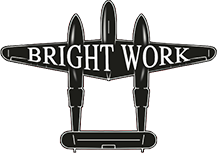When the winter’s over and a new season begins, it's time to think about ways…
Buffing Tool Terminology You Should Know
Aside from metal polish, the buffing tool used in an aircraft metal polish job can be one of the most important aspects of getting the desired, quality results. It’s no wonder, then, that technicians make it a point to stay up-to-date on all the latest innovations in buffing tools and have a working knowledge of the terminology associated with them.
Yet, the average everyday metal polisher may not be familiar with the terms and definitions associated with buffing tools, and may need help when it comes to sifting through the plethora of devices on the market. This post will serve as a guide for buffing tool terminology and will provide important information on selecting the best buffing tool for your project.
Polishing/Buffing Tool Terms To Know
Metal Working
Metal working is the catchall term used to describe all polishing and buffing processes for metals. Metalworking includes metal preservation and restoration of all types of items from aircraft to building materials to machine parts to Stainless Steel cutlery and appliances.
Buffing vs. Polishing
Though most use the terms ‘buffing’ and ‘polishing’ interchangeably, the truth is, buffing and polishing are two terms describing similar but separate processes. Buffing usually incorporates the use of abrasive that is loosely attached to a work wheel. This makes for a gentler application. Polishing is conducted with an abrasive glued to a work wheel.
Oxidation
Oxidation refers to the changes in the metal surface appearance due to exposure to oxygen over time. Another word for oxidation is tarnish. However, oxidation and tarnishing are not always the same. Some tarnishing occurs from exposure to elements other than oxygen. For instance, silver tarnishing occurs from exposure to hydrogen sulfide.
Rotating Heads
The rotating heads of a buffer deliver the buffing or polishing action to the surface of the metal. There are several different kinds of rotating heads such as rotary, orbital or circular. Also, buffers may come with single rotating head or dual rotating heads.
Polishing/Buffing Wheel
Polishing and buffing wheels attach to the rotating heads of a buffer. These wheels come in a number of shapes and sizes and can be made from a variety of materials from cotton to aluminum oxide. The type of material used on the polishing wheel is generally referred to as abrasive.
Abrasive
The abrasive is the material used on a polishing or buffing wheel to accomplish the task of removing nick, cuts, scratches and dents to yield a smooth metal surface. Depending on whether you’re polishing metal, plastic or wood, you’ll want choose an abrasive suitable to your buffing and polishing goals. A buffing job usually begins with a rougher abrasive at 60- or 80-grit and proceeds with a finer and finer abrasive until the desired finish is achieved.
Compound
The abrasive compound refers to the type of material used to remove nicks, scratches and other surface imperfections or to achieve a certain finish. There are several types of compound mostly referenced by color. For instance, red compound, also called Jeweler’s Rouge, is often used for plates. The green compound is specifically used on Stainless Steel and the white or blizzard compound is best for finishing hard metals.
Surface Feet Per Minute (SFM)
SFM is a unit of velocity that describes how fast a tool or machine travels. Specifically it measure the speed of the cutting edge of a cutting tool. In the context of buffing tools, it measure the speed of the polishing or buffing wheels.
Finishing
Finishing refers to the end goal of most buffing and polishing jobs. It’s the process of altering the surface of metal or other material to achieve a certain result. There are a number of finish types referenced by number, beginning with a #3 rough grinding finish all the way up to a #8 mirror finish.
How to Select the Best Buffing Tool For Your Job
Selecting the best buffing tool for your job goes beyond knowing the appropriate lingo. While terminology knowledge helps, there’s a lot more to buffing and polishing beyond it.
The first step when selecting a buffing tool is to consider the details of your job and the desired finish you’d like to achieve. Next you’ll need to consider the equipment you have on hand. If you’re already equipped with a suitable buffer or polisher, consider what kind of abrasive will be needed to get your job done. Remember, a good abrasive can go a long way.
The most popular kind of abrasive for metal polishing job is aluminum oxide. This abrasive can handle even steel. Yet another kind of abrasive material is silicon carbide used with low tensile metals such as brass and aluminum. Many abrasives come with the compound worked right in so that all that’s need to complete a job is to attach the wheel and begin the process.
When choosing your buffing tool, you’ll need to be able to distinguish between several types of features to select the best buffing tool for your job. Common bells and whistles include low to high rotating speed, lock mechanism for triggers, quick disconnect attachment systems for wheels, lightweight size, and miniature shape for getting into tight spots.
Know Your Buffing Tool Terms
In some respects, the world of buffing tools is a whole other realm complete with its own set of terms and techniques. Getting to know these can be tricky, but a good guide, like the one in this post, can make all the difference. The next time you’re in the market for a good buffing tool, remember to consider the type of metal or other materials you’re working with and the type of job you’re ultimately hoping to accomplish.

This Post Has 0 Comments